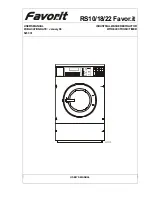
30
- Do not tumble dry woolen articles. Pull them to
their original shape and dry them flat.
Woolen Articles
- Some woven and loopknit materials may
shrink, by varying amounts, depending on their
quality.
- Always stretch them out immediately after
drying.
Woven and Loopknit Materials
- Do not overload your dryer
- Take out permanent press articles as soon as
the dryer stops to reduce wrinkles.
Permanent Press and Synthetics
- Always check the manufacturer's instructions.
Fiber or Leather Materials
- Always check the manufacturer's instructions.
Baby clothes and Night Gowns
- Do not dry any items made from or containing
rubber or plastics, such as:
a) aprons, bibs, chair covers
b) curtains and table cloths
c) bathmats
Rubber and Plastics
- Do not dry fiberglass articles in your dryer.
Glass particles left in the dryer could be picked
up by your clothes the next time you use the
dryer and irritate your skin.
Fiber glass
• When drying cycle is completed, “ ”
[Crease decreasing] is displayed on the LED
display.
• The Crease decreasing is setting
automatically when a drying cycle is complete.
• When you are do remove a load of clothes
from the dryer as soon as it stops, wrinkles
can form.
• The Crease decreasing operation periodically
tumbles, rearranges and fluffs the load.
• The “ ” message will continue to display
until the clothes are removed or the
Start/Pause button is pressed.
3. Completion of Drying
• By touching the Dry button, the drying time
can be selected.
• Drying course can last up to 340min.
• When selecting drying only, spinning is
included in case of necessity such as
improving energy efficiency.
• These drying times are given as a guide to
help you set your dryer for manual drying.
Drying times can vary greatly depending on
dampness, room temperature and type of
fabric and your own experience will be your
best guide.
2. Drying time guide
How to use washer
















































